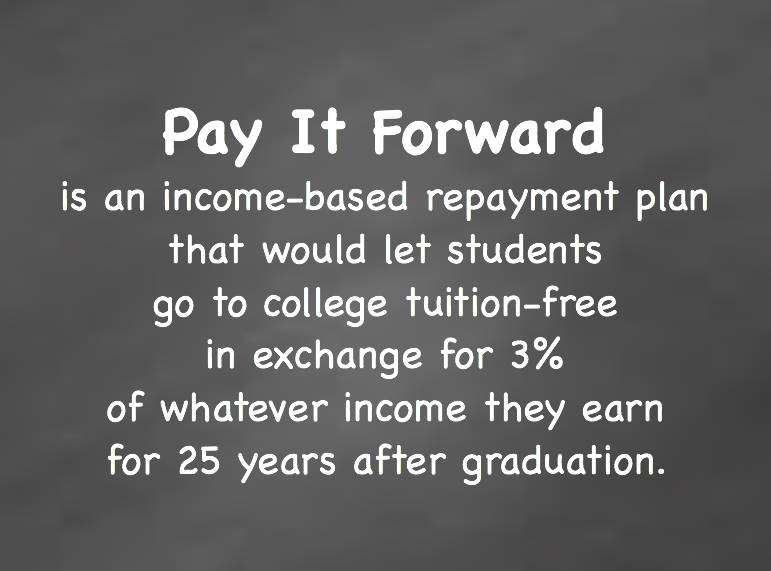THE PERFECT AND THE GOOD
 Obviously, health care and college should be free. Both should be amply funded by the state with the proceeds from a progressive tax system. But over forty years of transferring public wealth toward private profiteering has left us in a place where the obvious has become politically and economically impossible. In this context, pragmatic progressives are forced to support flawed half-measures like the Affordable Care Act, with the hope that incremental progress turns out to be better than no progress at all.
Obviously, health care and college should be free. Both should be amply funded by the state with the proceeds from a progressive tax system. But over forty years of transferring public wealth toward private profiteering has left us in a place where the obvious has become politically and economically impossible. In this context, pragmatic progressives are forced to support flawed half-measures like the Affordable Care Act, with the hope that incremental progress turns out to be better than no progress at all.
The current student debt crisis, precipitated by decades of disinvestment in public higher education, has brought us the idea of Pay It Forward, a college version of Obamacare—not what we really need but better than what we’ve got.
Pay It Forward is an income-based repayment plan that would let students go to college tuition-free in exchange for 3% of whatever income they earn for 25 years after graduation. This money goes into a fund that covers tuition for later students. It’s like social security in reverse—you get the benefit first and then pay into the fund. The idea has drawn interest from state legislators and student groups around the country, most notably in Oregon, where HB 3472 has authorized a pilot program.
Pay It Forward has provoked both great enthusiasm and harsh criticism. The most obvious attractions are access to college for those who can’t afford the upfront costs of tuition and life after college without debt. Students would no longer have to take on tens or hundreds of thousands of dollars in loans to pursue their dreams. Nor would they have to forsake a career in social work or rural medicine and turn to corporate law or plastic surgery in order to pay off their debt. Best of all, banks would have to look elsewhere to make their quotas on mortgaged futures.
The objections to Pay It Forward have come from thoughtful places, but they tend to throw the bathtub out with the bathwater. The idea clearly needs work and development, but in today’s climate, we’re probably foolish to just dismiss it. College should be free but it isn’t going to be any time soon. To reject anything that doesn’t do everything is to make the perfect the enemy of the good.
Some of the most daunting objections are primarily practical: the startup costs (the money the fund would need until enough people were paying into it) would be more than significant and the payback plan would require IRS buy-in. But these kinds of questions are mostly questions of political will—if Pay It Forward is to get legs, it will have to jump over these hurdles.
The more interesting objections are those that ask questions about impacts and unintended consequences:
—Some people will pay more than they would have paid in up-front tuition. This is absolutely true and the only response is, So What? It’s a little weird to hear progressives who regularly argue for the rich to pay more worry that people with high incomes will have to pay more than the cost of their education so that others may be educated too. To each according to their dreams, from each according to their ability to pay.
–Pay It Forward will encourage further state disinvestment in public higher education. State disinvestment is a huge problem—it is the problem. And it is deeply bound up with the fight around state revenue structures and the ideological divide that animates that fight. Pay It Forward would not inherently make state investment in higher education better or worse. Over the last ten years, skyrocketing tuition and massive debt have not slowed down state disinvestment. In fact, the influence of lobbyist-laden lenders has probably sped it up.
–Pay It Forward further emphasizes the notion of higher education as a private rather than a public good. Again, this objection seems to come from the inflexible place where anything short of complete state subsidy must be rejected. It is true that the money in the Pay It Forward fund will come from people who go to college, but it will be distributed in a way that benefits and expands the collective of people who attend college. This is certainly superior to our current tuition/debt model. And in some cases, even arguably more progressive than a complete state subsidy. The state of Washington, for example, has the most regressive tax system in the country, where poor people pay a percentage of their income in taxes that is four times greater than what rich people pay. To fund college from a regressive tax base that exploits people who often have no social, cultural, or economic shot at college is not necessarily superior to putting the bite on people who have actually been to college.
Any significant implementation of Pay It Forward would also have to make provisions for widespread participation and stable state support. But the idea is still on the drawing board—the study to do a pilot in Oregon is the only actual program to date. Details and problems will have to be worked out as things move forward.
The ideas behind Pay It Forward are solid and progressive. The program would increase access to college by eliminating tuition, it uses what is essentially an income tax, and it shifts the cost of college away from crippling debt.
There is still a lot to talk about to create a widespread and successful program, but we shouldn’t just dismiss the idea because it isn’t perfect right now.